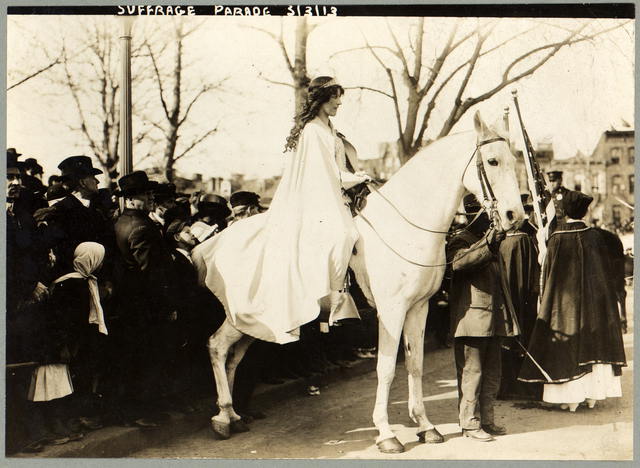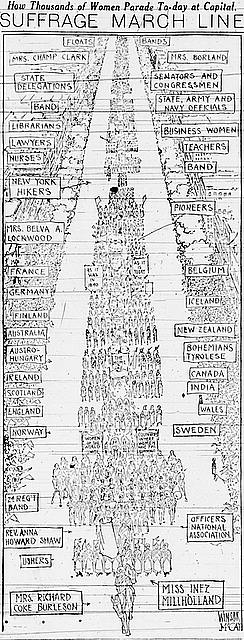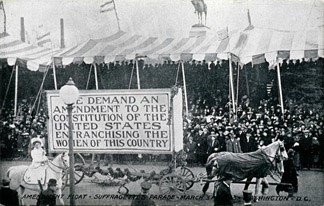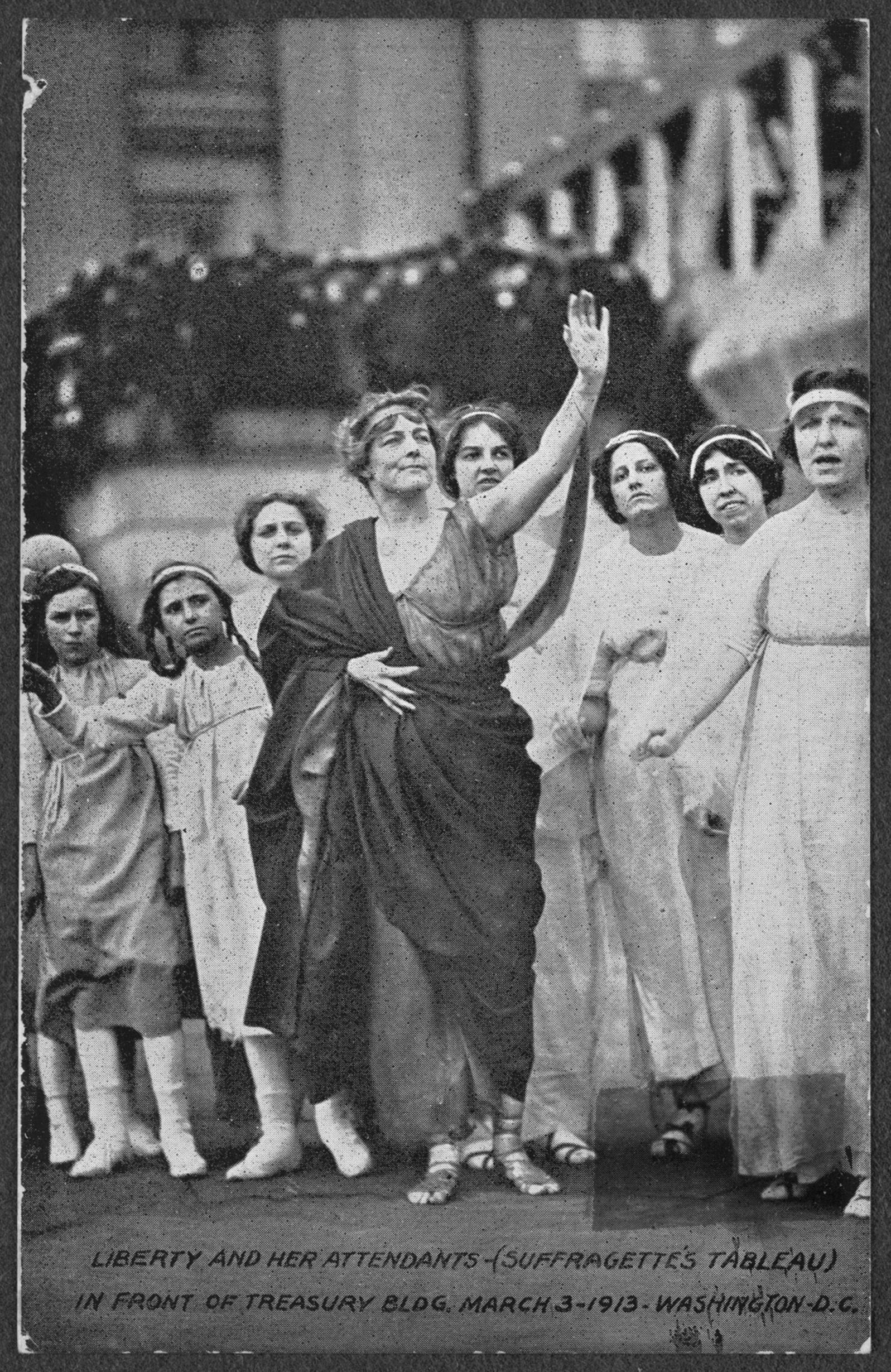The Parade
Thesis
Introduction
The Parade
Spectator Violence
Leading the parade was Inez Milholland, a well known activist, speaker, and lawyer. She acted as a symbol for the suffrage movement, riding atop a beautiful white horse named Grey Dawn. She wore a white dress, cape, and tiara which was adorned with a golden star.

Inez Milholland at the suffrage parade, Library of Congress

Suffrage march line, Library of Congress
The rest of the women in the parade were not marching in random crowds. Women were sectioned off into groups by state, profession, and academic regalia from their universities. The parade organizers had created this design in order to demonstrate the many roles of women in society.
Behind the parade were over twenty floats with messages. One of these messages read, “We demand an amendment to the Constitution of the United States enfranchising the women of this country." (“1913 Woman Suffrage Procession”). This message became known as “The Great Demand”. “The Great Demand” was a stepping stone for the women’s suffrage movement because it showed that women were not afraid to be assertive or “un-lady like” to win their rights. They affirmed “The Great Demand” as their goal.

"The Great Demand" float, Harvard University

Suffragette's Tableau, Library of Congress
The parade ended with a tableau on the steps of the treasury building. The tableau began with “The Star Spangled Banner”. Afterwards, the woman representing Columbia emerged from the steps in national colors. Next came Charity and Liberty. Finally the steps filled with Justice, Peace, and Hope. All six figures stood, watching the rest of the paraders reach the steps as trumpets sounded around them. This made for a dramatic end to the march.